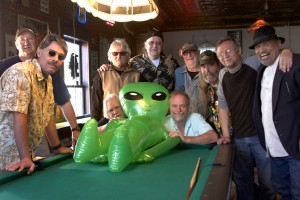by Martha Quillen
Lately, I’ve been thinking about the modern world. When I was in fourth grade we were supposed to write a play about what we wanted to be when we grew up. My group wrote about astronauts meeting Martians for the first time. An interest in space travel was typical then; now dinosaurs are more popular.
In the 1960s, they told us Americans would be the first people to walk on the moon, and ours would be the first generation to see other planets. That was true enough – although seeing Mars at IMAX was a mite disappointing.
American exceptionalism, the idea that America is special, or maybe even superior, is generally debated from two viewpoints today: 1) we have the right to intervene in foreign affairs when we perceive potential danger; or 2) we are imperialistic. Both sides tend to see the U.S. in militaristic terms, and forget America’s enthusiasm for anything else. But Americans returned from World War II ready to save the world. At home we beat back polio, slowed tuberculosis, built new schools, fought poverty, and challenged racism. We sent Peace Corps volunteers all over the planet to build dams, bridges and goodwill, eradicated smallpox with the help of friends abroad, and hoped to someday eliminate famine and pestilence.
We were, perhaps, naive, and maybe, as some would claim, also interfering. But we had dreams.
By the 1960s America’s dreams were clashing. President John F. Kennedy, Martin Luther King and Bobby Kennedy were assassinated, race riots broke out, and we ended up fighting a long, confusing war in Viet Nam.
Our eagerness was dampened and our dreams chastened, but we survived and thrived. A mere decade ago, two Trade Center towers soared over New York City. Wall Street was flying high, and Americans seldom worried about terrorist threats – even though several successful attacks had already occurred.
Here at home in 2000, Coloradans tended to worry about rapid growth, runaway sprawl, and heedless development. In Central Colorado, locals attended planning meetings and visioning sessions (where they almost universally supported light industry, a diversified economy, affordable housing–and preserving open space, ranchland, and ma and pa businesses).
In retrospect, was any of that effort worth the time? Or would it have been just as effective, or perhaps more so, to just wait for today’s bankruptcies and foreclosures to slow the sprawl? It’s hard to say (although one suspects rural communities might have had better luck trying to attract unicorns than light industry).
Those were the good old days, though – before we realized our savings and jobs were at risk. Now, however, we know, and are eager to blame, our political opponents, which is easily done since both Democrats and Republicans are at fault.
In 2008, Alan Greenspan, the Chairman of the Federal Reserve under Ronald Reagan, George H.W. Bush, William Jefferson Clinton and George Walker Bush, admitted before Congress that there had been a basic “flaw in the model” which he had assumed defined “how the world works, so to speak.”
But Greenspan didn’t bring down our economy alone. The current banking crisis couldn’t have happened if the Gramm-Leach-Bliley Act of 1999, named for its prominent Republican sponsors and signed by President Clinton, hadn’t repealed the Glass-Steagall Act, which prohibited the risky banking practices which led us into disaster.
And then there was the Commodity Futures Modernization Act of 2000, which deregulated derivatives and credit default swaps. It was also sponsored by Republican Senator Phil Gramm and signed by Clinton.
Democrats and Republicans alike encouraged private financial institutions to make huge profits and grow ever bigger by risking funds our government insured.
But there was more insanity to come.
Somewhere along the way, we started producing a steady stream of nonsense. Maybe it was the Internet, or chat rooms, or the need to fill news shows without relying on expensive foreign correspondents. Or maybe it was lobbyists and pols (or extremists and fanatics) safeguarding their interests by keeping the rest of us at each others’ throats. Whatever inspired it, lies are flourishing.
Despite reports to the contrary, there aren’t any death squads (or even mandatory euthanasia counseling sessions) mandated in the health care bill. Sarah Palin didn’t try to ban any books at the Wasilla library, let alone a whole list of them. Barack Obama was born in Hawaii in 1961, where a birth certificate was duly issued and his arrival was announced in two newspapers.
But the lies just keep circulating, long after they’re debunked by reputable sources. And there are always more: No, there isn’t any bill under consideration that requires handgun owners to list their guns with the IRS. “In God We Trust” is on the new dollar coin. And President Obama has had lots of jobs in the private sector (including jobs in food service and construction).
I’m sure all of us get duped by such hokum on occasion; that’s inevitable. What’s disturbing is that falsehoods get more attention than facts. For years before the banking crisis, there was news about banking irregularities, bad mortgages, and fraudulent investment firms, but it was barely noticed. People in positions to know reported Madoff and problems at specific banks to the proper authorities, and nothing happened.
Clearly, if information doesn’t support our preconceptions we tend to reject it. Or shout it down. And who can blame us? There’s so much rubbish out there, it’s hard to know what to believe.
But there are truths out there, too, things that we need to hear and heed in time to address them reasonably and patiently – so we can avoid the next financial crisis, and shore up the levees before they break, and keep more jobs here at home. Yet just thinking about having to fix anything in our angry, disillusioned culture makes me want to retire to a deserted island without newspapers and Internet service.
I used to think arts, entertainment, and products were emblematic of their times, but now I’m not so sure. Back in the 1960s and 70s, technology was the rage. Ford had “a better idea,” General Electric brought “good things to life,” Dupont gave us “better living through chemistry,” and “nothing sucked like an Electrolux.” Gadget-loving Americans watched The Jetsons, Star Trek, Get Smart, Lost in Space, Mission Impossible, My Mother the Car, The Bionic Woman and The Six Million Dollar Man.
Yet now, in this second decade of the twenty-first century, we’re awash in old world fantasies, tales of wizards, witches, knights, elves, ghosts, werewolves and vampires. Dozens and dozens of novels and several popular movies currently feature blood-letting creatures of the night, and the world is once again full of lords, ladies, swords, daggers, and fire-breathing dragons thanks to the likes of Stephen Donaldson, Raymond Feist, Terry Goodkind, Robert Jordan, Tad Williams, Mercedes Lackey, Anne and Todd McCaffrey and many, many more.
Exactly why resurrecting Medieval myths and monsters is such a lucrative business in our post-modern, post-industrial information era is puzzling. Maybe readers want to immerse themselves in realms where there’s more grandeur to existence than our hectic, overscheduled, somewhat boring, everyday lives would indicate.
Or maybe people feel it’s time to turn back the clock. That would definitely fit with our modern inclination toward living simpler, more sustainable lives. You want to talk about alternative energy? Well, you can’t get much simpler than a torch and a fire pit.
Or perhaps such books just offer a faster, cheaper escape than my deserted island.


